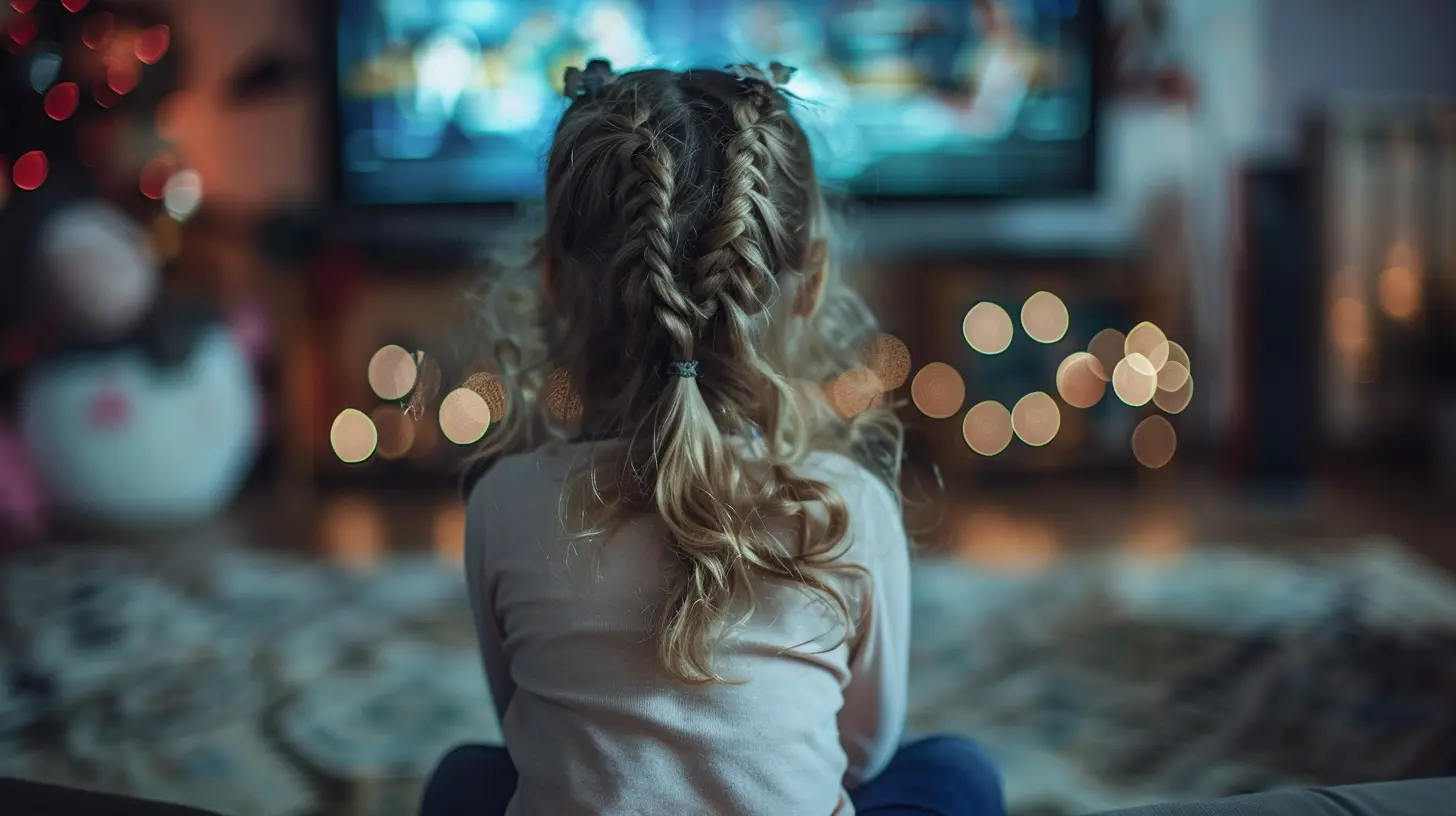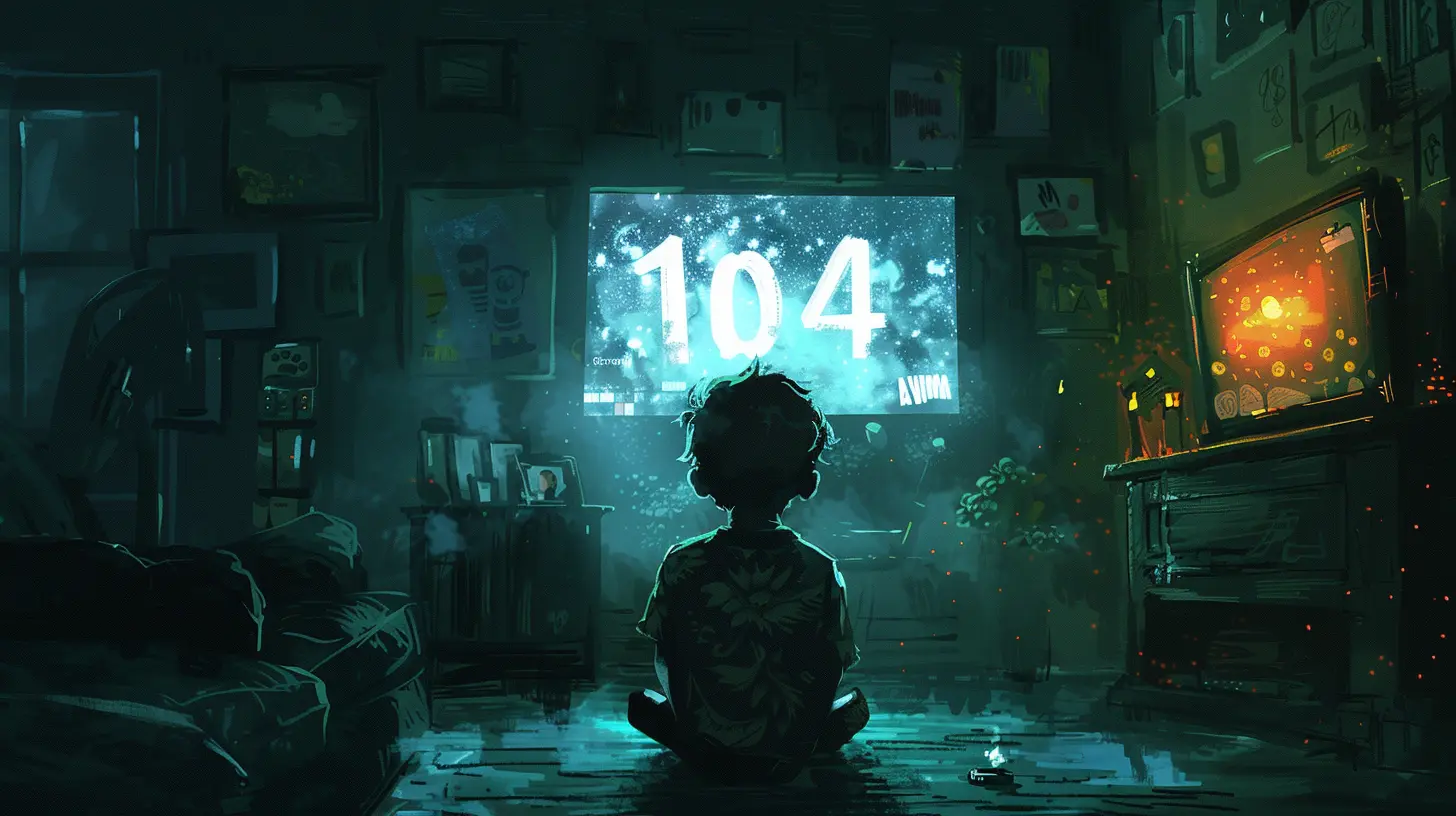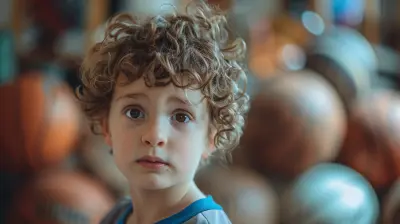The Link Between Screen Time and Childhood Anxiety
12 September 2025
Let’s face it—screens are everywhere. From the moment our kids wake up to the moment they go to bed, chances are they’re glued to a screen in some form. Tablets, TVs, smartphones, gaming consoles—you name it. While a bit of screen time can be educational or just plain fun, more and more studies (and parents’ instincts) are pointing to a worrying trend: a strong connection between excessive screen time and rising rates of childhood anxiety.
If you've been wondering whether all this digital exposure is doing more harm than good, you're not alone. Let’s unpack this topic together—what's really going on when our kids are seduced by screens, and how is it affecting their mental health, especially anxiety?

Why Screen Time Has Skyrocketed
Before we dive into the anxiety bit, let’s consider why screen time has become such a staple in children’s lives.Screens are convenient. They entertain. They distract. And sometimes, they even teach. Parents often lean on screen time for a breather (no judgment here—we've all been there).
But screens have also replaced a lot. Outdoor play. Face-to-face chats. Boredom (which, surprisingly, has its benefits). With remote learning, social media, YouTube rabbit holes, and even virtual playdates becoming part of the norm, kids today are growing up in a world that is vastly different from just a decade ago.
Now, let’s see what all this means for their anxious little minds.

Childhood Anxiety: More Common Than You Think
You might be surprised just how many kids are dealing with anxiety these days. According to data from health organizations, anxiety disorders affect one in eight children. That’s not just the occasional worry about a test or making new friends. We’re talking about chronic anxiety—overthinking, sleepless nights, tummy aches, irritability, and in severe cases, panic attacks.Kids are under pressure. Academic demands, social comparisons, constant stimulation… they’re always “on.” And guess what contributes heavily to that mental overload?
Yep. Screens.

The Digital Overload: What’s Going On in Kids’ Brains?
Here’s where things get real. Our brains—especially developing ones—aren’t built to handle constant stimulation. When kids spend hours scrolling, swiping, and watching, their brains are on high alert. Dopamine, the feel-good chemical, gets released every time they see a funny video or win a game. It's like junk food for the brain.But all that instant gratification comes at a cost.
Their ability to focus decreases. Patience wears thin. Real-life interactions become uncomfortable. And with every swipe, their brains are rewiring. That’s not an exaggeration—neuroscientists have found that excessive screen use can literally change the structure of the brain.
And you know what happens when the brain is overworked and overstimulated? Anxiety creeps in.

Social Media: The Anxiety Machine
Now let’s talk about the big elephant in the digital room—social media.Platforms like TikTok, Instagram, and Snapchat are where kids “hang out” now. But unlike real-life hangouts, these platforms are filled with comparison traps.
“Why didn’t I get as many likes as my friend?”
“Why does she look so perfect?”
“Why wasn’t I invited to that party?”
These thoughts can be incredibly damaging, especially for young, impressionable minds. The fear of missing out (classic FOMO), online bullying, and the pressure to maintain a curated online persona all contribute to rising anxiety levels.
It's like living under a microscope 24/7.
Sleep Is a Silent Victim
Ah, sleep—the golden tool to recharge both body and mind. Sadly, screen time steals it away quietly.Many kids are using screens right before bed, and that blue light? It messes with melatonin production, making it harder to fall asleep. Shorter sleep + fragmented sleep = one cranky, anxious kid the next day.
Kids need sleep to regulate emotions, manage stress, and simply function well. When they don’t get enough, everything feels harder—school, friendships, home life. Anxiety loves to swoop in when the body’s defenses are down.
The Relationship Between Screen Time and Physical Activity
Another link worth mentioning? Screen time directly competes with physical activity.Remember when playtime meant running around the neighborhood or climbing trees at the park? Now it often means playing Fortnite or watching YouTube. Less movement means less natural stress relief.
Exercise is one of the most powerful tools to reduce anxiety. It triggers endorphins (the “happy” chemicals) and gives kids a healthy outlet to burn off steam. When movement takes a back seat to screen time, anxiety doesn’t stand much of a chance—it gets the upper hand.
Watching or Interacting? Not All Screen Time Is Equal
Let me make one thing clear—screen time isn’t the enemy in and of itself. It’s a tool. It’s how we use it that matters.There’s a big difference between passively watching cartoons for five hours vs. actively engaging in an educational app or video chatting with Grandma.
Still, even "good" screen time should have boundaries.
Signs Your Child’s Screen Time Might Be Linked to Anxiety
Noticed some changes in your child’s behavior lately? Here are some common red flags:- Struggles with face-to-face social interaction
- Irritability or meltdowns when screen time ends
- Trouble sleeping
- Frequent complaints about headaches or stomachaches
- Avoiding non-screen activities
- Increased clinginess or worry
- Sudden drop in school performance
If these sound familiar, it might be time to evaluate how much and what type of screen time your child is getting.
How To Create Healthier Screen Habits as a Parent
Okay, so we know screens can contribute to anxiety. What now? Throw all devices out the window? Probably not. But balance is key.Here’s how to make screen time work for your family, not against it:
1. Set Clear Limits
Kids thrive with structure. Create tech-free zones (like bedrooms) and set specific times for screen use. Maybe one hour after homework or only on weekends—whatever works for your family. Stick to it.2. Be a Role Model
Yep, they’re watching you too. If you’re scrolling through your phone during dinner, they'll think that’s normal. Set the example you want them to follow.3. Encourage Offline Fun
Help your child rediscover the joy of non-digital activities. Puzzles, drawing, biking, dance parties—there’s a whole world out there. Show them it’s not boring—it’s awesome.4. Prioritize Face-to-Face Connection
Make time for real conversations. Ask about their day. Share a silly story. When kids feel seen and heard, their anxiety naturally decreases.5. Use Tech Tools to Help You
Parental control apps can be lifesavers. They help you track usage, set limits, and block inappropriate content. But remember—they’re tools, not substitutes for engaged parenting.6. Keep Screens Out of the Bedroom
This one’s huge. No phones or tablets during bedtime. The bedroom should be a place to unwind, not a digital playground.7. Check In Often
If your child uses social media, talk to them about what they’re seeing. Make regular check-ins a habit. Normalize conversations about feelings. Sometimes kids just need a safe space to unload.
When to Seek Professional Help
Sometimes, despite our best efforts, anxiety might still rear its head. And that’s okay—it's not a reflection of your parenting.If your child’s anxiety is affecting their day-to-day functioning—school, friendships, sleep—it might be time to talk to a pediatrician, counselor, or child psychologist.
Early support can make a world of difference.
Final Thoughts: It's About Balance, Not Bans
Let’s be real—screens aren’t going anywhere. And truthfully, they’re not all bad. They connect us, entertain us, and sometimes even educate us. The goal isn’t to eliminate screens completely—it’s to use them intentionally.Think of screen time like dessert. A little bit? Totally fine. But too much? That’s when problems (like anxiety) show up.
So, let’s empower our kids to have a healthy relationship with technology. Let’s teach them to unplug, reconnect with the real world, and listen to their bodies and minds.
Because at the end of the day, nothing beats a healthy, happy, and present child.
all images in this post were generated using AI tools
Category:
Limiting Screen TimeAuthor:

Steven McLain
Discussion
rate this article
1 comments
Rebecca McLoughlin
Important insights! Balancing screen time can significantly impact children's mental well-being.
September 19, 2025 at 3:48 PM

Steven McLain
Thank you! Indeed, finding that balance is crucial for nurturing healthy mental well-being in children.


